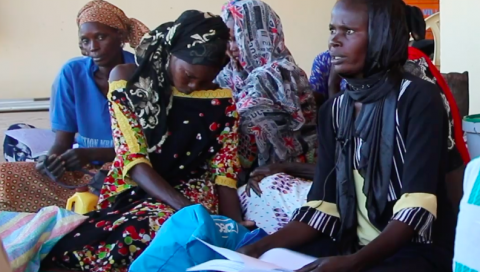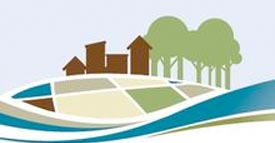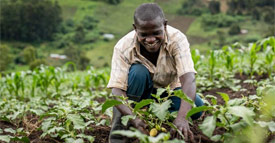Accueil / Que faisons-nous ? / Recherche / Objectifs de développement durable (ODD) / Projet de recherche sur les politiques d’assainissement en Afrique de (...) / Quantitative assessment of exposure to fecal contamination in urban (...)
Quantitative assessment of exposure to fecal contamination in urban environment across nine cities in low-income and lower-middle-income countries and a city in the United States
Publié le 30 octobre 2021
Yuke Wang a,⁎, Wolfgang Mairinger a, Suraja J. Raj a, Habib Yakubu a, Casey Siesel a, Jamie Green a, Sarah Durry a, George Joseph b, Mahbubur Rahman c, Nuhu Amin c, Md. Zahidul Hassan d, James Wicken e, Dany Dourng e, Eugene Larbi f, Lady Asantewa B. Adomako g, Ato Kwamena Senayah f, Benjamin Doe f, Richard Buamah h,
Joshua Nii Noye Tetteh-Nortey i, Gagandeep Kang j, Arun Karthikeyan j, Sheela Roy j, Joe Brown k, Bacelar Muneme l, Seydina O. Sene m, Benedict Tuffuor f, Richard K. Mugambe n, Najib Lukooya Bateganya o, Trevor Surridge p, Grace Mwanza Ndashe q, Kunda Ndashe r, Radu Ban s, Alyse Schrecongost s, Christine L. Moe a
a Center for Global Safe Water, Sanitation, and Hygiene, Hubert Department of Global Health, Rollins School of Public Health, Emory University, Atlanta, GA, USA
b Water Global Practice, The World Bank,Washington, DC, USA
c Environmental Interventions Unit, Infectious Disease Division, International Centre for Diarrhoeal Disease Research, Bangladesh (icddr,b), Dhaka, Bangladesh
d Data Analysis and Technical Assistance Limited, Dhaka, Bangladesh
e WaterAid, Phnom Penh, Cambodia
f Training Research and Networking for Development (TREND), Accra, Ghana
g Council for Scientific and Industrial Research Water Research Institute, Accra, Ghana
h Department of Civil Engineering, Kwame Nkrumah University of Science and Technology, Kumasi, Ghana
i Development Planning Unit, Kumasi Metropolitan Assembly, Kumasi, Ghana
j Wellcome Research Laboratory, Christian Medical College, Vellore, India
k School of Civil and Environmental Engineering, Georgia Institute of Technology, Atlanta, GA, USA
l Water Supply and Mapping, WE Consult, Maputo, Mozambique
m Initiative Prospective Agricole et Rurale (IPAR), Dakar, Senegal
n Department of Disease Control and Environmental Health, Makerere University School of Public Health, Kampala, Uganda
o Department of Environment and Public Health, Kampala Capital City Authority, Kampala, Uganda
p Deutsche Gesellschaft für Internationale Zusammenarbeit (GIZ) GmbH, Lusaka, Zambia
q Department of Public Health, Lusaka City Council, Lusaka, Zambia
r Department of Environmental Health, Faculty of Health
A b s t r a c t
Background : During 2014 to 2019, the SaniPath Exposure Assessment Tool, a standardized set ofmethods to evaluate risk of exposure to fecal contamination in the urban environment throughmultiple exposure pathways,was deployed in 45 neighborhoods in ten cities, including Accra and Kumasi, Ghana ; Vellore, India ; Maputo, Mozambique ; Siem Reap, Cambodia ; Atlanta, United States ; Dhaka, Bangladesh ; Lusaka, Zambia ; Kampala, Uganda ; Dakar, Senegal.
Objective : Assess and compare risk of exposure to fecal contamination via multiple pathways in ten cities.
Methods : In total, 4053 environmental samples, 4586 household surveys, 128 community surveys, and 124 school surveys were collected. E. coli concentrations were measured in environmental samples as an indicator of fecal contamination magnitude. Bayesian methodswere used to estimate the distributions of fecal contamination concentration and contact frequency. Exposure to fecal contamination was estimated by the Monte Carlo method. The contamination levels of ten environmental compartments, frequency of contact with those compartments
for adults and children, and estimated exposure to fecal contamination through any of the surveyed environmental pathways were compared across cities and neighborhoods.
Results : Distribution of fecal contamination in the environment and human contact behavior varied by city. Universally, food pathways were the most common dominant route of exposure to fecal contamination across cities in low-income and lower-middle-income countries. Risks of fecal exposure via water pathways, such as open drains, flood water, and municipal drinking water, were site-specific and often limited to smaller geographic areas (i.e., neighborhoods) instead of larger areas (i.e., cities).
Conclusions : Knowledge of the relative contribution to fecal exposure from multiple pathways, and the environmental contamination level and frequency of contact for those “dominant pathways” could provide guidance for Water, Sanitation, and Hygiene (WASH) programming and investments and enable local governments and municipalities to improve intervention strategies to reduce the risk of exposure to fecal contamination.
© 2021 The Authors. Published by Elsevier B.V. This is an open access article under the CC BY license









